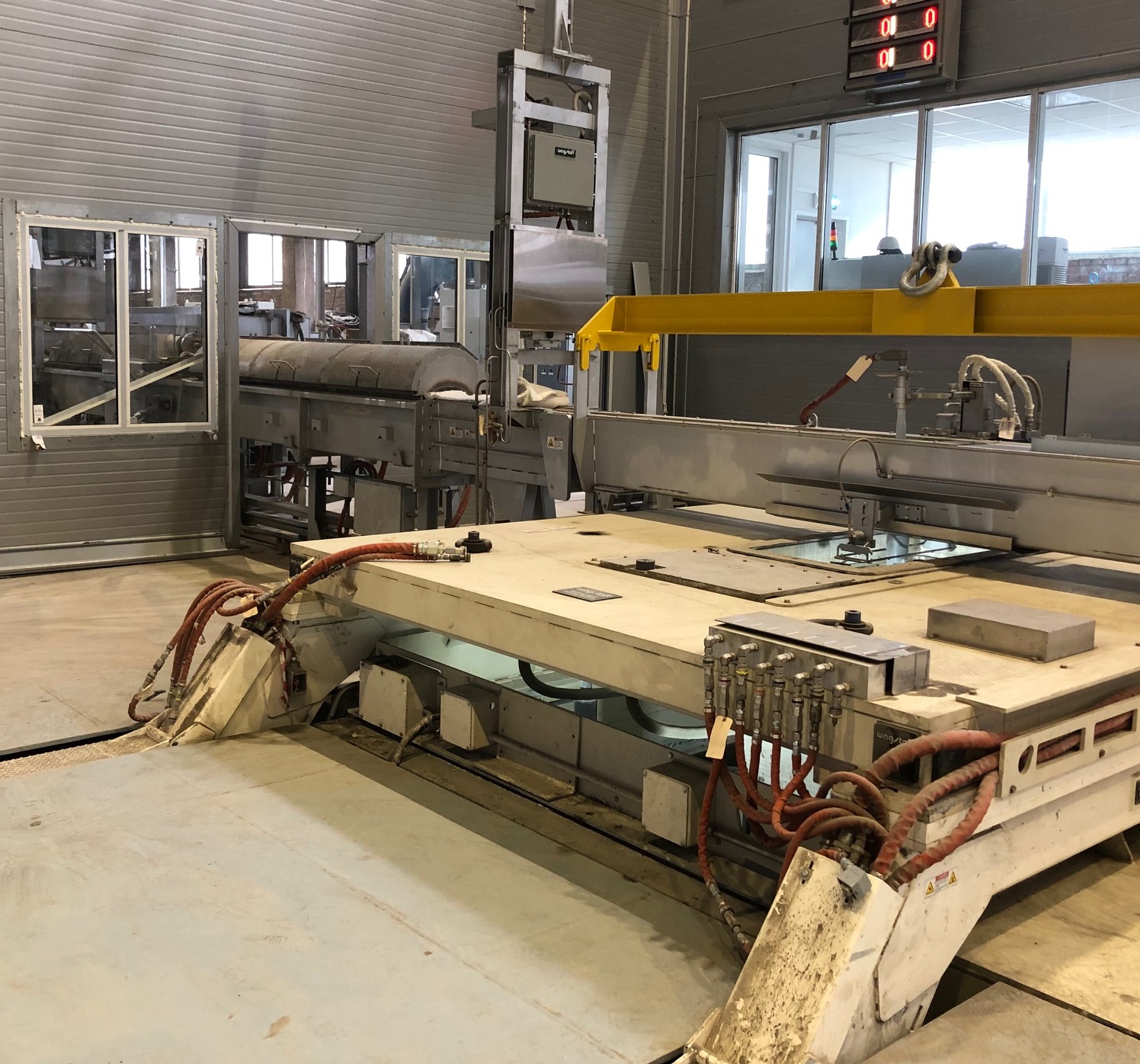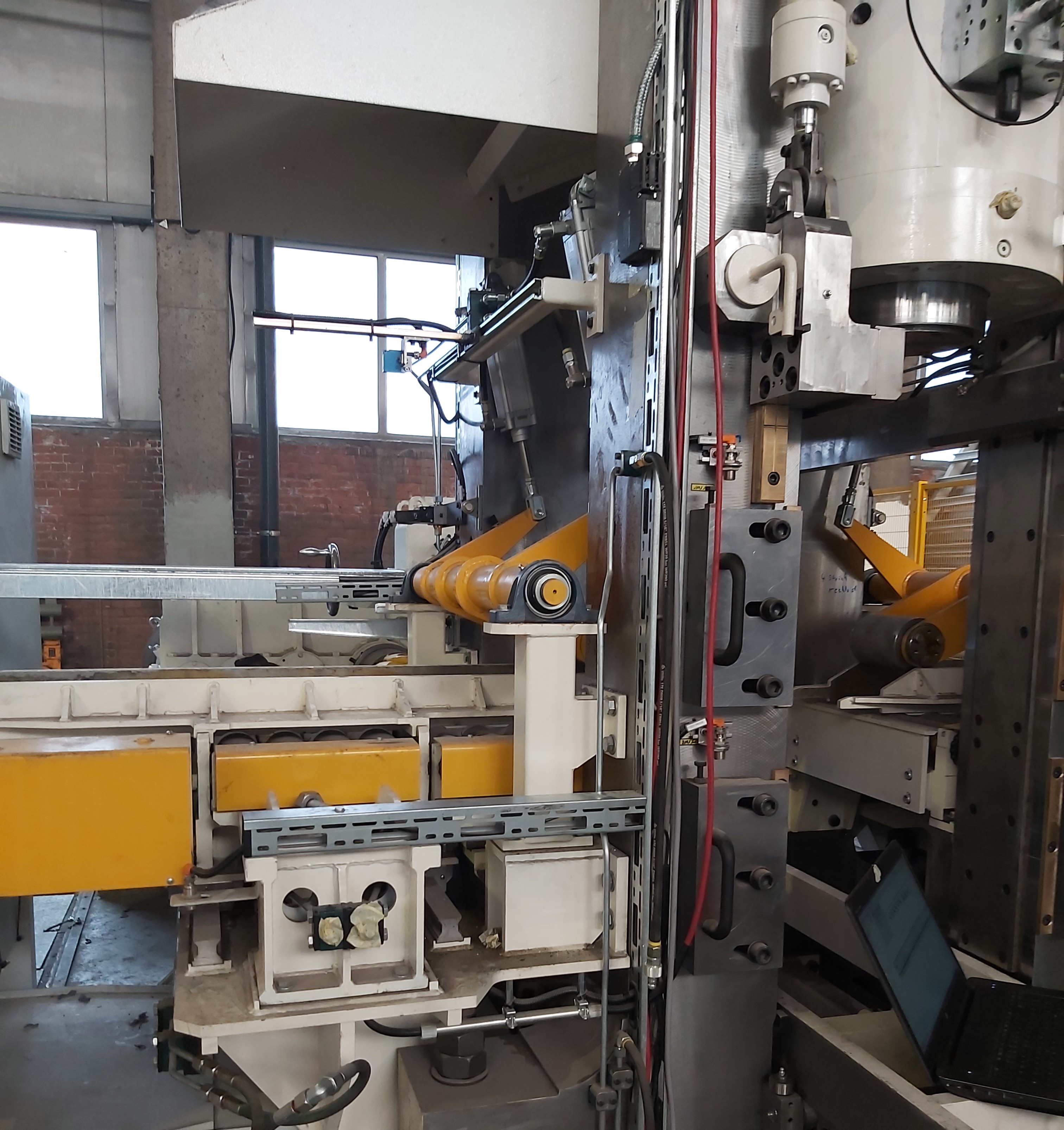By V. Mann, A. Krokhin, D. Ryabov, and A. Startsev, UC Rusal.
The quality and properties of rolled aluminum products directly depend on the quality of the slab production, which determines the desirable structure, geometric dimensions, and purity of the metal. These factors are crucial for reducing costs during the rolling process, as well as to achieve the necessary physical and mechanical properties of the final products. Based on this understanding of the requirements of rolling production, UC Rusal launched a pilot casting complex (OPLK) at its Krasnoyarsk aluminum smelter. The purpose of the complex is to perform physical modeling of the casting process with the aim of providing customers with the highest quality cast products.
Pilot Casting Complex
The creation of the OPLK was a logical continuation of the development of Rusal’s R&D competencies in foundry technologies. Since 2002, the Rusal Engineering and Technology Center (ETC) has been successfully operating in Krasnoyarsk, which has a research and analytical laboratory equipped with software systems for modeling casting and deformation processes. The synergy of mathematical and physical modeling allows the site to successfully carry out research and provide a technology transfer of solutions to the company’s other facilities.
During the development of the complex, Rusal analyzed all the current casting pit production technologies available. This enabled the team to take into account the main features of production that should be addressed and determine which equipment would be best suited for the complex. With this information in mind, it was determined that the main goals of the OPLK would be the following: develop and adjust the technical systems to improve the quality of slab and billet manufactured (in accordance with customer requirements), implement new alloys and slab dimensions with the aim of transferring the technology into the regular production stream of the company’s existing casting pits, develop and improve the homogenization treatment process in order to achieve desirable properties in the products, execute activities for the development of casting technologies for additional applications, and produce small lots of slab for select customers.
The selection of equipment for the OPLK was made with these tasks in mind. The complex installed two holding furnaces for the processing of both solid and liquid metal inputs. One is a large 30 ton holding furnace designed for full-sized casting trials, while the other is a small 5 ton furnace that enables researchers to make fine adjustments to the various parameters during melt preparation and casting. This will allow for the development of new types of products, or for the manufacture of small batches of slab and billet. The furnaces are equipped with inline systems for melt treatment, including ceramic foam and various bed-type filters.
An advanced casting machine was installed (Figure 1), with a casting table capable of using existing molds from various Rusal facilities, ensuring that the physical modeling is in full compliance with existing foundry operations. The casting area is able to develop and test slab with a maximum size of up to 800 x 3,200 mm and billet with diameters from 203 to 457 mm. A batch type heat treat furnace will be used to study the effect of homogenization on achieving desirable properties in the slab and billet, including the degree of transformation and dissolution of particles.

In addition, the OPLK includes a universal rolling mill (Figure 2), which allows researchers to perform hot and cold rolling of slab. The mill can obtain strips in widths up to 500 mm and thicknesses of 1–80 mm, which makes it possible to evaluate the characteristics of final sheet materials manufactured from the slab produced within the complex.

Research & Development
Creation of the OPLK enables Rusal to significantly reduce the time required to develop casting technologies for new alloys. This is because the characteristics of the slab and billet produced using the full scale equipment at the complex is almost fully identical to that produced at regular production facilities. One of the main fields of activity is the execution of continuous work to improve internal production processes at Rusal and thus ensure the quality of their products.
The requirements for cast slab and billet are constantly changing, based on customer demand. Metal purity is a key area of focus in this regard. Various aluminum slab and billet producers offer different approaches for the reduction of non-metallic inclusions. The most popular solutions, which currently exist in the market, are already installed on the casting line at OPLK. Nevertheless, one of the key advantages of the complex is the ability to quickly integrate new types of filter systems on a temporary basis in order to evaluate their efficiency for aluminum melt treatment. In this regard, the technologists at the complex have already carried out research work, which has resulted in stable melt quality in terms of the melt cleanliness. Proper flux usage combined with optimized melt preparation and casting technologies inside and outside of the furnace has enabled Rusal to achieve excellent melt quality results that meet customer specifications. Currently, the existing LiMCA and PoDFA devices for aluminum quality and inclusion measurement are able to perform precise analysis of melt cleanliness. A mobile liquid metal cleanliness analyzer helps staff to further control the melt quality in various areas along the whole length of the metal launder.
One example of the kind of development projects at the complex was to reduce the shell zone in large-sized 1050 alloy slabs. Minimizing the shell zone is necessary because it reduces the amount of swarf that needs to be removed through machining (milling) prior to rolling. For the development of casting technologies, the researchers at the complex based their work on the production route utilized at the Sayanogorsk (SAZ) aluminum smelter. Using mathematical modeling software, the researchers evaluated the metal motion vectors and temperature field distribution within the melt, taking into account shape and size of the Pyrotek combo bag. This enabled the researchers to optimize and to stabilize the process of slab casting, resulting in a 1.5 times reduced shell zone. The efficiency of this technical solution for reducing the shell zone was confirmed through the use of the equipment available at the site, as well as through subsequent experimental industrial casting at the SAZ production site, which confirmed the reproducibility of the process.
Conclusion
Since its launch in early 2019, OPLK has proved its effectiveness in the development of new grades of alloys and in solving technological problems related to increasing product quality. Rusal is ready to make maximum use of its competence in the field of mathematical and physical modeling at the OPLK to solve production problems and implement projects according to customer orders. The capabilities of the complex allow for a significant reduction in development and adjustment of casting technologies and a reduced cost for implementation of new alloys.
Editor’s Note: This article first appeared in the December 2019 issue of Light Metal Age. To receive the current issue, please subscribe.
